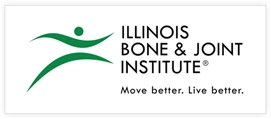Recovering form Shoulder Arthroscopy
Shoulder arthroscopy is a minimally invasive surgical procedure that is commonly performed to diagnose and treat various shoulder joint problems. It involves using a small camera called an arthroscope and specialized surgical tools to access the inside of the shoulder joint through small incisions. The camera displays pictures of the inside of the joint on a video monitor which Dr. Ronak Patel uses to diagnose and treat shoulder conditions such as rotator cuff tears, labral tears, shoulder impingement, and certain types of instability.
Benefits of Shoulder Arthroscopy
The advantages of shoulder arthroscopy include the ability to make an accurate diagnosis and repair most damage in the affected area. Arthroscopy benefits over open surgery include:
- smaller incisions
- minimal soft tissue trauma and therefore less pain and less postoperative swelling
- faster recovery
- reduced scaring, and
- earlier mobilization to regain pain-free motion and joint mobility through rehabilitation and physical therapy. Research shows that early movement of the joint promotes healing and leads to better outcomes.
Recovering from Shoulder Arthroscopy
Recovery from shoulder arthroscopy can vary depending on the specific procedure performed, the extent of the issue being treated, and individual factors like overall health and adherence to post-operative instructions. It involves several stages and requires adherence to specific guidelines to ensure a successful outcome.
In the immediate postoperative phase, patients can anticipate discomfort. Dr. Patel will use various modalities to keep you comfortable including nerve blocks, anti-inflammatories, cryotherapy (icing) and laser therapy. Icing helps manage swelling, while rest and avoidance of strenuous activities are crucial. Laser therapy helps reduce pain and inflammation. Immobilization through a sling is common to protect the shoulder as it heals.
The early recovery phase typically spans the first six weeks. During this time, Dr. Patel will order physical therapy to begin within the first few days or weeks after surgery. The focus is on gentle range of motion exercises to prevent stiffness and improve shoulder mobility. Depending on your progress, Dr. Patel may allow you to gradually wean off the sling. Pain and inflammation management continues to be important. The prospect of driving and returning to work depends on individual progress and medical approval.
The intermediate recovery phase, spanning roughly 6 to 12 weeks, introduces strengthening exercises to gradually rebuild muscle strength around the joint. Functional activities are incorporated to begin to mimic your daily activities and your sports and hobbies. There is a continued focus on pain reduction and swelling management because it is not uncommon to experience occasional discomfort especially after more intense physical therapy sessions.
The advanced recovery phase, spanning from 3 to 4 months, involves more challenging strengthening exercises to restore full shoulder function. If you are an athlete, you’ll begin engaging in sport-specific training to prepare you to return to your regular activities. Pain should be minimal at this point so that you likely will not need regular pain medications. You should also have regained considerable strength and functionality
Full recovery, typically extending beyond 4 months, marks the return of full range of motion, strength, and shoulder function. You can return to normal activities and potentially sports. Maintenance exercises are essential for long-term shoulder health. Follow up appointments are important so that Dr. Patel can monitor your progress and address any concerns.
Schedule a shoulder consultation
Shoulder injuries are common among athletes at all skill levels and can have a potentially serious impact on athletic performance. Dr. Ronak Patel completed his sports medicine fellowship training at the renowned Cleveland Clinic learning the most advanced and innovative surgical procedures, tending to professional athletes and most importantly, helping his patients return to full function without pain. He is also extensively trained and skilled in arthroscopy for shoulder conditions. Contact him to schedule a consultation at one of his offices in Hinsdale, Illinois or at his offices in Westmont, Elmhurst, and Munster, Indiana.
At a Glance
Ronak M. Patel M.D.
- Double Board-Certified, Fellowship-Trained Orthopaedic Surgeon
- Past Team Physician to the Cavaliers (NBA), Browns (NFL) and Guardians (MLB)
- Published over 49 publications and 10 book chapters
- Learn more

